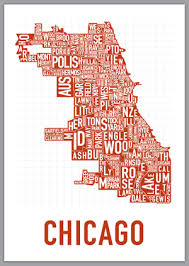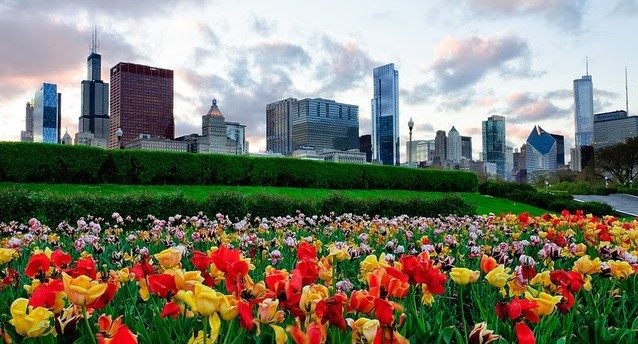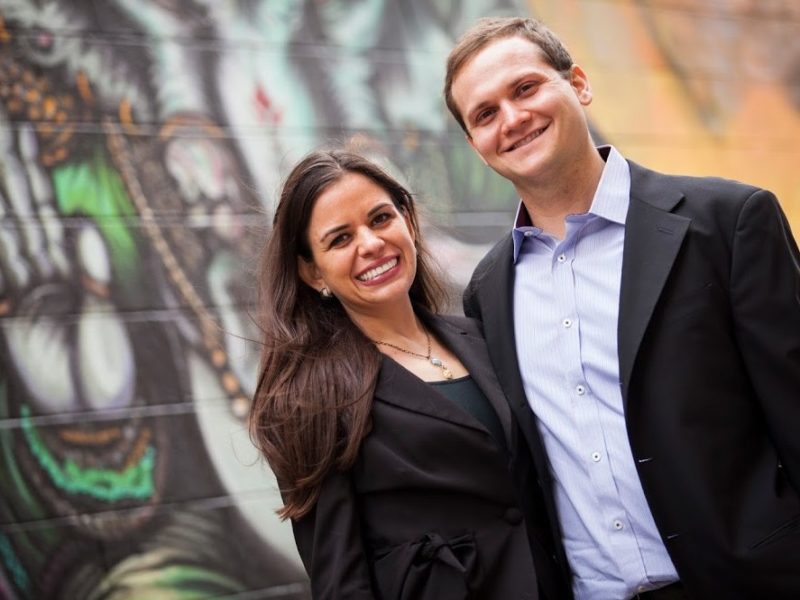
How the Loop Got Its Name, and Other Stories of Our Neighborhood’s Names
We’ve talked before about our city’s many neighborhoods (as well as that eye-catching map of Chicago that seems to be in everyone’s living room). And now that Manhattanitesknow how their neighborhoods were named, we thought we’d explore Chicago’s neighborhood naming conventions. Some names have obvious roots. We can all put two and two to come up with Lakeview; ditto South Shore, River North and even Boystown. But other neighborhoods’ names have been obscured by time and history. We present some of the most fascinating naming origin stories for Chicago neighborhoods below, from the South Side’s Grand Crossing through The Loop all the way to our northernmost neighborhood, Rogers Park.
The Loop
The Loop is so named because of the streetcar—and later, El lines—that ran circles around our downtown. Though now, of course, it is a bustling downtown with sites like the Chicago Mercantile Exchange, the Willis and Hancock towers and Museum Campus, it began as Fort Dearborn, the first military encampment in the area. It’s also the site of an infamous meeting between the area’s Native Americans and Chicago’s earliest settlers that became The Fort Dearborn Massacre—and the first instance that Chicago had to start fresh after a tragedy and rebuild.
Pilsen
Today, Pilsen is a Mexican-American community with large, colorful murals on buildings throughout the area and schools—like Cristo Rey Jesuit and Benito Juarez Community Academy—that celebrates its residents’ heritage. Pilsen takes its name from Plzn, the Czech city famous for its Pilsner beers and the hometown to many of the area’s original inhabitants.
Back of the Yards
This neighborhood is back of Chicago’s stock yards, the large industrial meatpacking district that gave us the reputation as “hog butcher of the world.” Back of the Yards has come a long way since it was described by Upton Sinclair in The Jungle as “that square mile of abominations,” setting off the shot heard ’round the food production world and inspiring some of the first food safety legislation.
Greater Grand Crossing
Grand Crossing started with a feud—a “frog war,” as it goes in the parlance of railway companies. Both the LakeShore and Michigan Railroad and the Illinois Central Railroad laid claim to the area, and in 1853, the Illinois Central Railroad tried to settle the feud once and for all, by laying its tracks across LakeShore’s using a metal connector known as a “frog.” The move had tragic consequences: The two companies’ trains crashed, killing 18. Unfortunately, Greater Grand Crossing remains one of the city’s more violent neighborhoods today, but organizations like the Gary Comer Youth Center—home to a community-supported rooftop garden and the South Shore Drill Team, who performed at the presidential inauguration—are helping to highlight and strengthen the community.
Rogers Park
Chicago’s farthest north neighborhood was first settled by an Irish immigrant named Phillip Rogers, who slowly bought up 1,600 acres of land in the area at around $1.25 per acre. Rogers Park didn’t get its name until the railway man and Rogers’s son-in-law Patrick Touhy (who lent his own name to Touhy Avenue) inherited the land and began selling it off. Rogers Park today is a residential community with Loyola University at its heart.
Andersonville
Andersonville also borrows its name from a surname—albeit not from a specific person. Primarily settled by Swedish immigrants, many of whom who answered to Mr. or Mrs. Anderson, Andersonville today still bears from many of its Swedish roots. From the blue-and-yellow signs to the bakeries that offer limpa breadand cardamom-spiced pastries to Swedish classes offered at the Swedish American Museum, if you’re Scandinavian-American, you don’t have to go far to learn about your family history in this city.
Cabrini Green
All but one small section of the Cabrini Green housing projects were torn down in the early 2000s, but the legacy of the city’s community housing efforts remain. Frances Cabrini and William J. Green both fought tirelessly for the poor during their careers. Cabrini was a 19th century nun who became the first American canonized as a Saint; Green was a Democratic congressman and the mayor of Philadelphia in the 1970s. The housing projects may have been well intentioned, but by the time the Chicago Housing Authority started demolition, the projects were, as Time described in a photo retrospective, “notorious” and “troubled.”
Wrigleyville
OK, most people probably recognize the origin of Wrigleyville. Chicagoans, baseball fans and even gum chewers don’t have to go far to run into something named after the Chicago-area businessman. But William Wrigley’s career is so interesting we thought it was worth a look here. The illustrious businessman worked his way up from Doublemint Gum to the development of Catalina Island off of the coast of Los Angeles to, of course, majority stakeholder in the Chicago Cubs.
Chicago is officially divided into 77 community areas, which are further subdivided into the neighborhoods most Chicagoans recognize. We had the space to cover one-tenth of those here, but we hope you’ll continue the project and let us know how your neighborhood got its name in the comments. Oh





